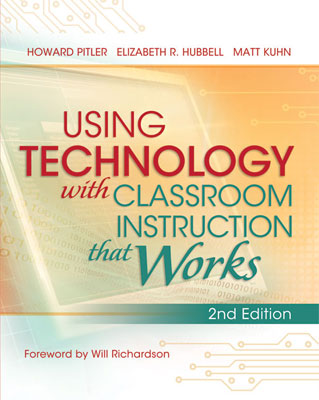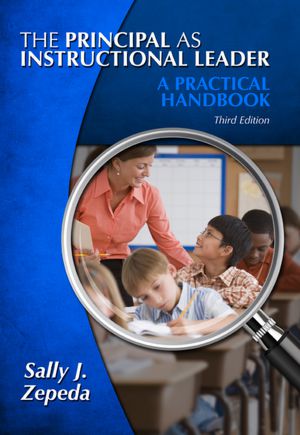“The educational improvement efforts now in place are aimed at bringing back the education that American offered students in the 20th century (with some technological enhancements,” From
Digital Natives to Digital Wisdom: Hopeful Essays for 21st Century Learning by Marc Prensky
Do Americans really have the stomach to “reform their schools?” Looking at the list of reforms in vogue today, one can only wonder whether reform is really the goal, or as Prensky points out, “Reform efforts are more about bringing back the education system that was,” instead of creating an education system that truly meets the needs of 21st century students.
We continue to strangle our education system with accountability and testing, standardization, and general neglect, and yet, we are surprised that our students are still dropping out and still not achieving.
If we truly want to change education in our country, then perhaps we really need what Sir Ken Robinson calls an “education revolution” instead of reform. The truth is, we’ve been reforming education for years. When I left college for my first teaching job in the late 80s, the dust was still flying from frantic reform efforts to address the “issues” identified in the Reagan administration’s report
A Nation at Risk. Career ladder programs were attempted to provide teachers “pay based on merit.” Standardization of education was afoot through standards implementation at the state level. Politicians were hung up on national test scores that signified “the educational apocalypse on the horizon.” And, the predominate mantra was, “Throwing money at our educational problems won’t fix them.” These ideas offer absolutely nothing revolutionary.
They, like many of our reforms now, simply tweak an education system that is in need of a revolution. As Prensky points out, “However well meaning those who proposed and fund today’s educational reforms may be, their aim is generally to improve something that is obsolete.”
I actually think Prensky is being too kind.
Those pushing some of the reforms today are not “well-meaning at all.” They have political and cultural agendas that actually do not want to see public schools thrive. They want to see an end to all public schools, or at least a marginalized public school system that is much weaker and irrelevant. These are the same individuals and groups that turn our schools into places where culture wars are fought and political points are scored.
The truth is, to revolutionize the education our students are getting, there are three things school leaders can focus on immediately, and none of them are magical or new. According to Marc Prensky,
“Lots of money is being spent on trying to fix the educational ‘system.’ But what the reformers have haven’t yet understood is that it’s not the ‘system’ that we need to get right; it’s the education the system provides.” Let’s focus on the education our children are receiving and not the “system.” Here’s 3 things for considerations for starters:
- Make learning authentic. Let’s engage our students in the kinds of learning that is based in the real world. Project-based learning and problem-based learning ask students to engage in real learning tasks. Even making our classrooms more real-world like makes learning more authentic. Getting students out of rows of desks and at tables or even seated in huddles on the hallway floors. There’s nothing authentic about sitting in desks carefully placed in rows, or working on questions in at the conclusion of each chapter in a textbook. Teachers standing forth lecturing and directing all student learning is also inauthentic learning. Teachers still practicing in this manner, and principals/school leaders who support this kind of teaching are guilty of malpractice. It takes authentic learning experiences to revolution the learning and education of our students.
- Foster a school culture of support and personalization. Most schools I’ve worked in are still hard at work forcing students to fit into them rather than changing the school to fit the needs of its students. Schools can focus on the education of children by simply becoming flexible agents that bend and twist to meet the needs of students. For example, schedules do not have to be same every year. Why can’t the class schedule be revised to fit students’ needs instead of fitting students to a class schedule? Schools must become personal places where all students are known for who they are, not by simply whether they scored “proficient on the latest test,” or by their student number. A school that truly personalizes education for students will not allow students to slip away into the anonymity of numbers. They know their students for who they, and they adapt and find ways to support and personalize education for all students.
- Allow students to engage in using 21st century tools. Far too many schools, and their administrators, are still fighting to keep technology out. If we want to revolutionize the education our children are receiving, then let’s give them the technological tools they need to access the wealth of information online. Let’s give them opportunities to use those same tools to create content, and connect with others globally. School administrators can begin revolutionizing the education students in their schools by embracing Bring Your Own Device (BYOD) policies, 1:1 technology initiatives, and by becoming technology users themselves. Still school administrators need to be cautious and remember: the success of the education the students are receiving through technology is not measured by the number of iPads or laptops purchased. The success is found in the classrooms where teachers engage students in using these devices, not as tools “assist them to teach as they’ve always done.” But as a means to challenge and disrupt both teaching and learning.
Reform efforts abound. Just ask any politician and I’m sure you will immediately get a long list of “Things-I’m-gonna-do-to-reform-education.” Most often, this only translates into trying to turn schools into what they once were, or into what that individual would like them to be. As school leaders, we can revolutionize the education our children receive if we focus on that education and not the system.
If we simply emphasize the importance of authentic learning, foster a culture of support and personalization, and give students 21st century learning experiences with 21st century tools, the education revolution will begin in our schools.




